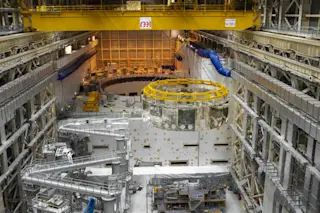Researchers may have found a way to drastically increase the performance of the lithium ion batteries that power everything from electric cars to laptops. By reconfiguring the battery to allow lithium ions to rush in and out about 100 times faster than before, researchers say they've created a prototype that provides fast bursts of power and also, crucially, recharges in seconds.
A prototype of a battery made with the new technique could be charged in less than 20 seconds compared to the six minutes it took to charge cells made in the standard way [Australian Broadcasting Corporation].
Lithium ion batteries are capable of storing a great deal of energy, and have therefore been selected for use in electric cars like the Tesla Roadster (which uses 6,831 individual cells) and the Chevy Volt. But getting the lithium ions
in and out is a drawn-out affair. This phenomenon explains why some electric ...














